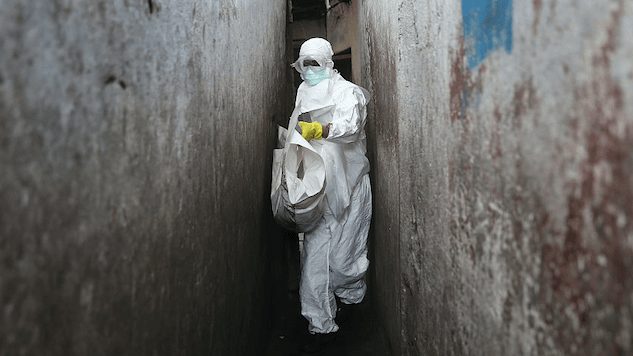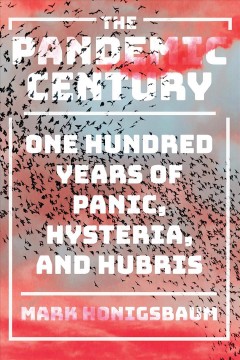Mark Honigsbaum Reveals We Need Vigilance and Open Minds to Survive the Next Pandemic Century
Photo of a Liberian Red Cross burial team in 2015 by John Moore / Getty Books Features mark honigsbaum
At the bottom of the World Health Organization’s 2018 list of the pathogens it deems most likely to cause a pandemic is an infectious agent more frightening than all its contemporaries: Disease X. It represents the threat of infectious diseases never before seen, diseases whose true names will soon be known.
Speak to enough scientists involved, and one realizes this is inevitable.
The Pandemic Century, Mark Honigsbaum’s medical history of outbreaks, epidemics and pandemics (a pandemic requires the pathogen affect great swaths of a region, leaping international and geographic boundaries) since 1900, reveals the threat posed to humanity by emerging infectious diseases. It also provides the blueprint for safeguarding our society in the future by refusing to fall into whatever dogma du jour currently dominates the discipline, lest we be whipsawed by complacency.
 Honigsbaum traces the chain of transmission, from the Spanish flu raging during World War I to AIDS in the 1980s to Ebola’s 2013-2016 razing of West Africa. Each outbreak cracks the chitin in which we feel safely enveloped, claiming an inexcusable amount of human life but leading to a freshly molted, newly alert humanity. Yet purported truisms like “Ebola will never infect a major urban center” or “Zika is a tamer form of mosquito-borne monsters” have left carnage in their wake.
Honigsbaum traces the chain of transmission, from the Spanish flu raging during World War I to AIDS in the 1980s to Ebola’s 2013-2016 razing of West Africa. Each outbreak cracks the chitin in which we feel safely enveloped, claiming an inexcusable amount of human life but leading to a freshly molted, newly alert humanity. Yet purported truisms like “Ebola will never infect a major urban center” or “Zika is a tamer form of mosquito-borne monsters” have left carnage in their wake.
The only affliction more dangerous than those who headline the chapters is human hubris.
But panic is never the answer; fear is often more dangerous than the disease. Ebola spread throughout West Africa partly due to false conceptions, yes, but it was greatly aided by a failure to fight the mistrust and fear of local populations. The current Ebola outbreak in the Democratic Republic of Congo, the 9th and 10th outbreaks in the country wherein the virus was discovered, has seen local fears, unstable security situations and a government in flux lead to violence, as treatment centers burn and aid personnel are unable to access those who need help. What has changed is a new focus on assuaging those concerns via engagement and the deployment of Congolese health workers.
Emerging infectious diseases are nature’s revenge. Arboviruses most likely colonized the new world in the stagnant water of slave ships, Honigsbaum writes; habitat loss and climate change are modifying our relationship with flora and fauna in ways which guarantee new interactions with zoonotic disease; our gluttonous desire for chicken and pig has created massive reservoirs in which influenza can rise. But every outbreak in Honigsbaum’s history leaves us better prepared for the next. Antibodies develop in those infected, and our mega-immune system of scientists and aid workers become stronger with each pandemic weathered.
Humanity’s jousting with pathogens is eternal, the relationship marked by spates of brutal violence in which victory is traded. What is needed are as many scientists from as many different backgrounds as possible—a diversity of people leading to a diversity of paradigms, leading to a fluidity in thinking and a willingness to look beyond the electron microscope to ensure the future.
In short, The Pandemic Century reveals that we need vigilance and open minds to survive the coming decades.
B. David Zarley is a freelance journalist, essayist and book/art critic based in Chicago. A former book critic for The Myrtle Beach Sun News, he is a contributing reporter to A Beautiful Perspective and has been seen in The Atlantic, Hazlitt, Jezebel, Chicago, Sports Illustrated, VICE Sports, Creators, Sports on Earth and New American Paintings, among numerous other publications. You can find him on Twitter or at his website.